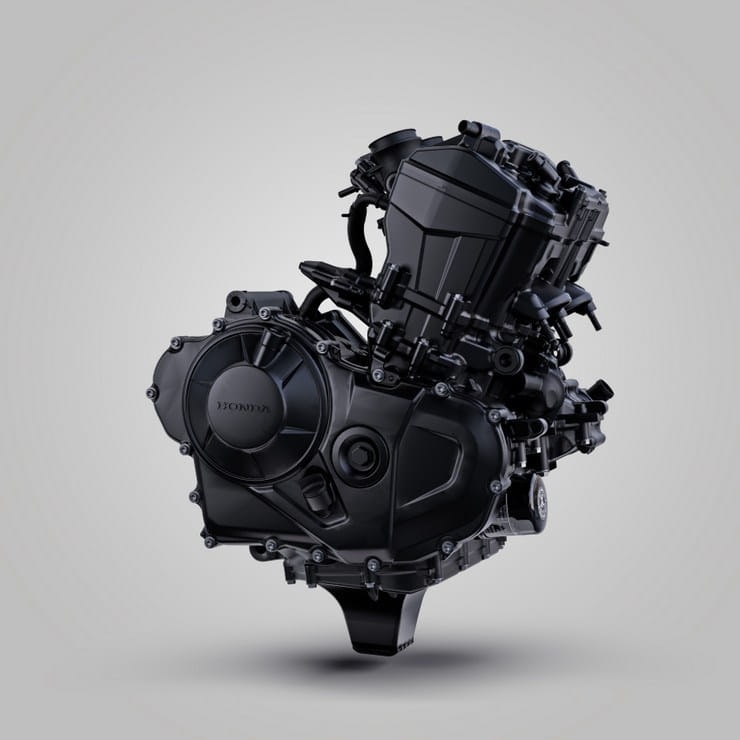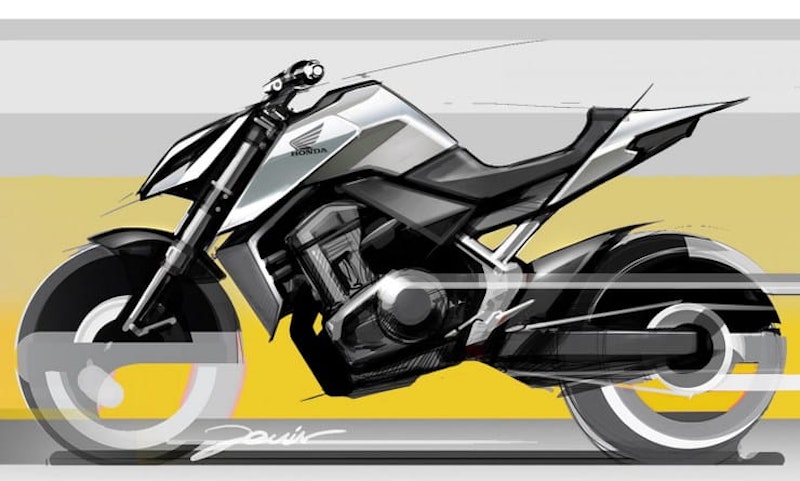2023 Honda Hornet engine unveiled
By Ben Purvis
Motorcycle Journalist
09.09.2022
A full year ago in September 2021 we revealed that Honda was working on a new 755cc parallel twin engine thanks to our sources close to the Japanese factory – and now that’s been officially confirmed as the company has taken the wraps off the engine that will power the upcoming machines reviving the Hornet and Transalp names.
The first bike to get the new engine is the Hornet, first shown in as a design concept late last year, with more detailed sketches appearing in June 2022. While Honda has yet to even mention the Transalp adventure bike, being developed around the same engine, it’s recently been spotted undergoing a publicity photography shoot, suggesting both models will be launched as part of Honda’s 2023 line-up.
Honda might already have a 750-class parallel twin engine in the form of the 745cc, SOHC unit that powers the NC750 range, but the new 755cc motor – while just 10cc larger – has a completely different mission.
Where the NC750 motor is designed specifically for low-end torque and economy, resulting in a modest peak power of 57bhp at a lowly 6750rpm, the new Hornet engine manages 90.5bhp at 9500rpm, indicating a completely different feel and delivery despite its similar internal dimensions. The higher-revving nature means that the torque peak, an impressive 55.3lb-ft, arrives at 7250rpm, compared to 50.9lb-ft at 4750rpm for the NC750 twin.
Like most of the latest generation of parallel twin engines, for instance Yamaha’s MT-07 motor, the new Honda design has a 270-degree crankshaft, giving the same firing interval that you’d get from a 90-degree V-twin engine and improving its character and power delivery.
The engine’s overall design is clearly closely related in concept to the larger, 1084cc twin used in the Africa Twin, NC1100, Rebel 1100 and the Japan-only Hawk 11. Like that engine, it has Honda’s ‘Unicam’ cylinder head layout, with a single overhead camshaft that acts directly on the intake valves and opens the exhaust valves via rocker arms. It’s a design that’s intended to offer the best of both single and dual overhead cam designs, and one that’s long been used to great effect on the CRF450R motocross bike. Importantly, compared to a DOHC design, it allows a more compact cylinder head and a narrower included valve angle for a flatter roof to the combustion chamber – making it easier to achieve high compression ratios.
Unlike the NC750 or the larger Africa Twin engine, there’s no indication yet that Honda will adopt the heavy, bulky DCT semi-automatic transmission on the new Hornet engine, which instead has a conventional clutch and foot-operated shifter.
Fuyuki Hosokawa, who led the development of the latest Fireblade, is the Test Project Leader for the Hornet. He said: “The Hornet has always been a very special motorcycle for Honda. Exciting, engaging performance has always been matched to lithe, agile handling.
“Before starting this project, we thought long and hard about what kind of performance we wanted to give to the rider. We knew that it was essential to keep the classic Hornet top end power ‘hit’ and at the same time, as a new generation Hornet for modern times, we wanted the engine to have a really strong torquey feel and ‘throbbing’ sensation at low to mid rpm. Our aim has always been to match these to the lightest, most agile handling possible, to make every ride – even in town – as engaging and fulfilling as possible.
“To get the kind of performance and lightweight handling we wanted, we knew we had to develop an all-new, short-stroke, twin-cylinder engine, with a 270° crankshaft. This would not only deliver that top-end rush, but also the sporty lowdown torque, ideal for riding in urban environments and powering out of corners on the open road.”
Share on social media:

